I’ve heard that it’s not very safe to drive on a plugged tire. Is that true? Why is repairing or replacing a damaged tire a better option than plugging a tire? What are the dangers of driving on a plugged tire?
We’ve all been there before. You wake up or walk to your car after work, only to look down and see a flat tire and a nail sticking out. You don’t have time to take your vehicle into an auto shop and need a quick fix. It’s a small nail, so you plug your tire and go on with your life.
You only meant for the plug to be a temporary solution until you could get the tire replaced. Then life happens, and it’s a few days before you can get a new tire. Those few days turn into months, which can quickly turn into a year. You may start to ask yourself if it’s really safe to drive on a plugged tire.
It turns out that installing a plug can have a serious impact on the life and integrity of your tire. That is if it’s safe to plug your tire at all. Here is what you need to know about plugged tires and how safe it really is to drive on one.
The first thing you should consider when plugging a tire is if it’s safe to install a plug in the first place. There are specific cases when it’s safe to use a plug. Outside of these scenarios, driving on a plugged tire could be dangerous to you and other drivers.
Depending on the size of the puncture, the extent of the damage, and the tread of your tire, you may not be able to repair the tire with a plug. The size of the hole must be no larger than 0.25 inches and must be located on the tread of your tire. If the puncture is on the shoulder or sidewall, then you will need to replace the tire.
The angle of the puncture also makes a big difference in the effectiveness of a plug. Ideally, the nail or object that punctured your tire went straight in. This would make a repair fairly straightforward. However, if the tire was punctured at an angle, the plug will have a hard time completely sealing the punctured area. Take note of how the nail or screw looks and the angle that it entered the tire.
However, if the tire was punctured at an angle, the plug will have a hard time completely sealing the punctured area. Take note of how the nail or screw looks and the angle that it entered the tire.
The age and quality of your tire is also an important factor in whether or not it can be plugged. If the tread on your tire has been worn below 2/32 of an inch, then your tread is too far gone to be plugged. If you’re wondering how you can measure this, 2/32 of an inch is the amount measured by the classic penny test. Make sure your tire passes the penny test before you even thinking of plugging it. If it doesn’t pass the test, then it’s probably time for a new set of tires anyway.
If you have to ask yourself whether or not your tire can be repaired, that may be a sign that it’s time to move on. A TIA-certified tire technician can inspect your tire and let you know for certain if it’s safe.
Another thing to think about when it comes to driving on a plugged tire is how your repair may impact the manufacturer’s warranty on your tire. Improper repair and maintenance is a surefire way to void your warranty. Think twice the next time you consider opting for a DIY approach on your next tire repair.
Improper repair and maintenance is a surefire way to void your warranty. Think twice the next time you consider opting for a DIY approach on your next tire repair.
When it comes to the safety of your vehicle, it’s always best to leave things to the experts. By having your tire repaired by a certified professional, you can be confident your repair is performed properly, and your manufacturer warranty is still “good.”
The biggest problem with driving on a plugged tire is that you still have a hole in your tire! While it may be a temporary fix, it’s important to recognize that there is still a structural failure in your tire that needs to be addressed.
It only makes sense that a plugged tire cannot handle the same level of stress and strain as a tire in good condition. This is especially true when you start reaching higher speeds on the highway. The manufacturer won’t support a tire’s speed rating once it has been repaired. So, if you plan on racing, off-roading, or just want to go fast, a plugged tire isn’t going to work.
Over time, it’s possible for that small puncture to slowly get larger. This results in a greater loss of air while also increasing your chances of a blowout on a road. Furthermore, the plug itself may fail while you are driving, putting you back where you started.
In the event of a flat tire from a nail or screw, the best course of action is always to replace the tire. A plug or patch for your tire may help tide you over until you can have it replaced, but it’s important to remember that a plug is meant to be a temporary fix.
While it may be tempting to see how far you can get with a five-dollar repair, the consequences of a plugged tire failing will be much worse than if you had replaced the tire in the first place.
If you just purchased a tire or recently bought a set of expensive tires, it can be a frustrating experience. If this is the case and you hope the tire can be saved, it may be worth it to have it inspected by a professional.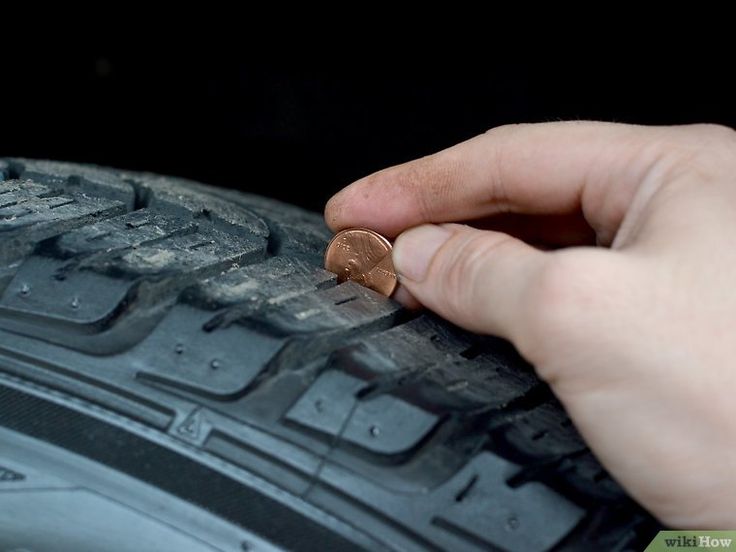
The TIA-certified tire experts at Tread Connection know how to properly diagnose, inspect, and repair flat tires. When you work with Tread Connection for your flat repair, the tire will be removed from the wheel and carefully inspected inside and out. This helps us ensure whether or not it can be safely repaired.
If the tire can be repaired, our team will take care of it for you. In the event that your tire cannot be safely repaired, our team will recommend a replacement from our wide range of tires to find the right one for your needs, and your budget.
It’s never worth it to gamble when it comes to the safety of you and your vehicle. Don’t try to see how long you can drive on that plugged tire. Have your tire inspected and repaired the right way by the TIA-certified tire experts at Tread Connection.
We bring the tire shop to you and can repair your flat or replace your tire at your home and on your schedule.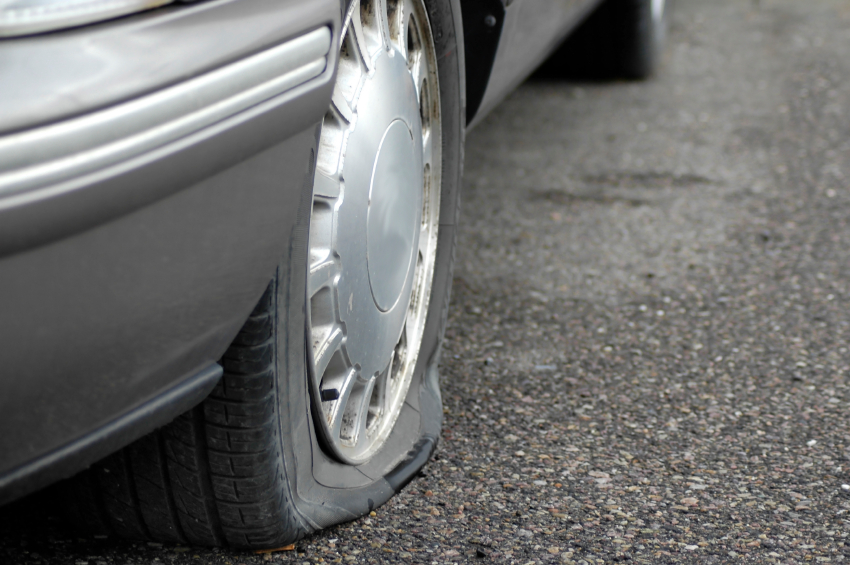 Schedule your tire service with Tread Connection today!
Schedule your tire service with Tread Connection today!
BUY TIRES
Every editorial product is independently selected, though we may be compensated or receive an affiliate commission if you buy something through our links. Ratings and prices are accurate and items are in stock as of time of publication.
Modern vehicle tires are tough, standing up well to rough terrain and thousands of miles of driving. Trouble is, tires are not invincible. Every so often car tires spring leaks. Air can start leaking from anywhere on a tire, and the location of the leak determines whether or not you can fix it yourself. And if you can't fix it yourself, the location of the leak will also tell you if you need a professional repair or a new tire.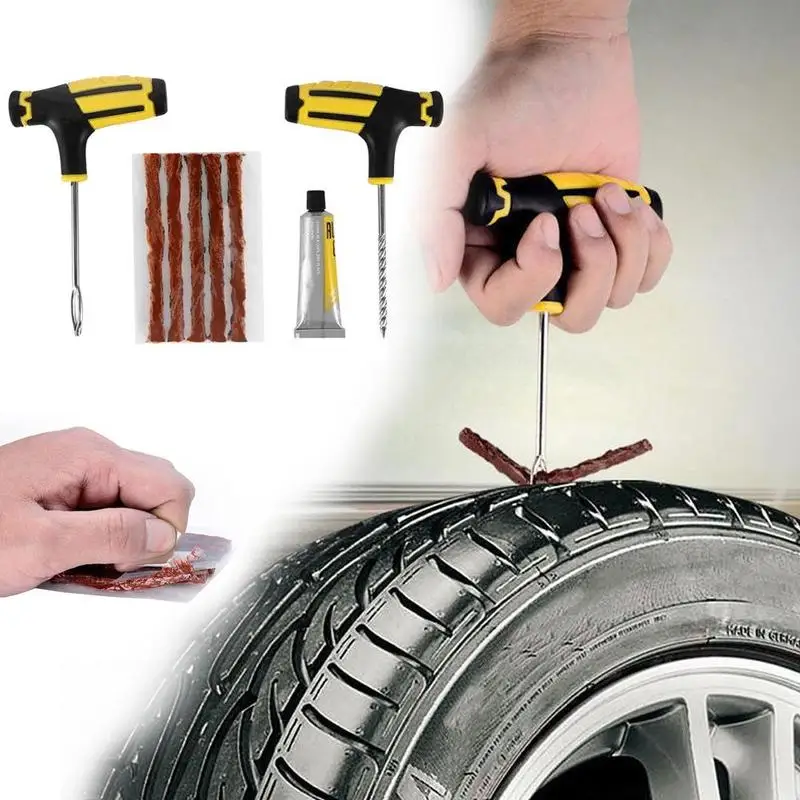
Whether or not your tire is tubed or tubeless affects things, too, because only tubeless tires can be repaired using the technique of plugging that we'll show you here. The good news is that modern vehicles always have tubeless tires, and this means that repairing with a rubber plug is often an option.
Plugging a tubeless tire is only a possibility when your puncture is in the tread area. If the air leak is where the sidewall of the tire meets the rim — this is called a "bead leak" — you'll need to visit a mechanic with a tire machine to dismount the tire from the rim and remount it with sealing liquid applied to the bead. If your sidewall has been punctured, you need a new tire, because damage there can lead to a blowout at highway speeds, even after repair.
Learn exactly how to plug a tire so next time you spring a leak between your treads, you'll be able to get up and running again in record time.
Total time completing the repair is about 15 minutes. Doing the work yourself will save you about $20 and the time spent driving to the garage and waiting.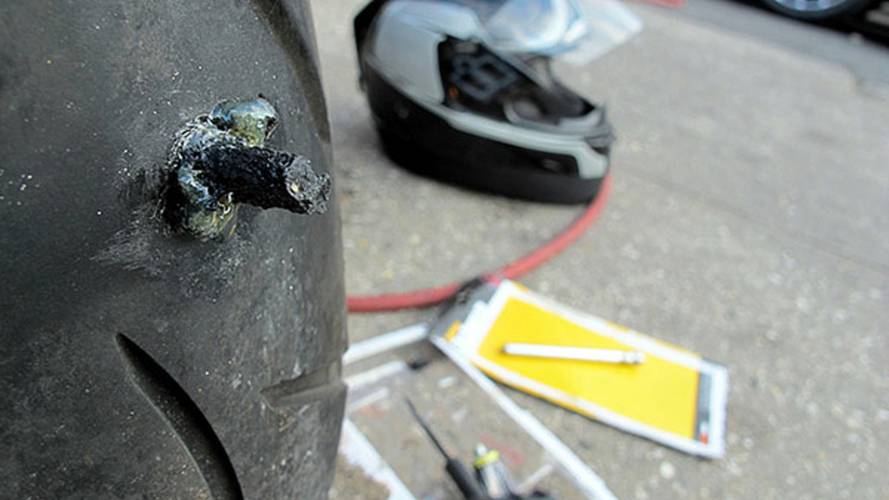
Steve Maxwell for Family Handyman
Complete DIY projects like a pro! Sign up for our newsletter!
Do It Right, Do It Yourself!
Originally Published: August 27, 2020
Many car enthusiasts, in an effort to save money, are increasingly resorting to the installation of mixed tires. This method is especially relevant when only one tire has become unusable. But drivers do not know that they are not only breaking the rules, but also endangering themselves and pedestrians. Therefore, before deciding to install certain tires on the axle, it is necessary to find out a number of rules and restrictions in the current legislation.
This method is especially relevant when only one tire has become unusable. But drivers do not know that they are not only breaking the rules, but also endangering themselves and pedestrians. Therefore, before deciding to install certain tires on the axle, it is necessary to find out a number of rules and restrictions in the current legislation.
One of the main restrictions is that in the summer months, from June to August, you can not drive on studded and winter tires, and in winter, on the contrary, it is forbidden to drive a car without winter tires. But the tire regulations don't end there:
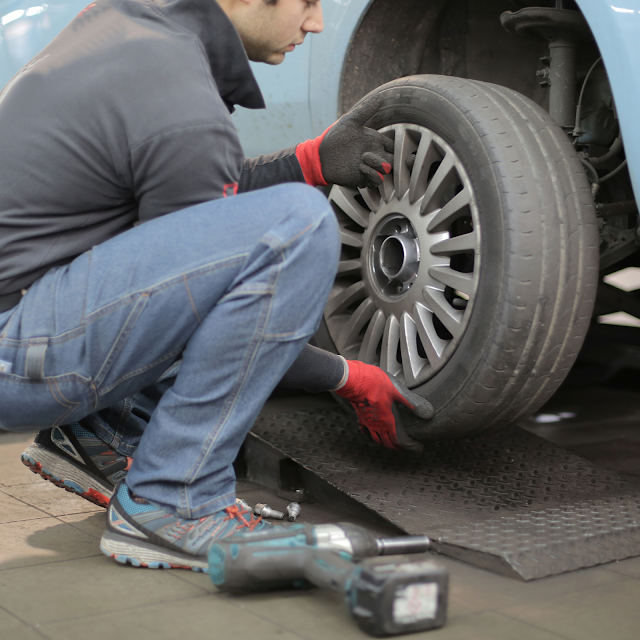 Loss of control can be provoked even by tires with the same grip, but with a different pattern.
Loss of control can be provoked even by tires with the same grip, but with a different pattern. As regards the installation of tires on different axles of the car, there is only one restriction that excludes the use of studded and non-studded tires. You must choose one of the options: either all with spikes, or all without spikes. For a combination of such tires, the car owner risks getting a fine. This applies even when among all winter tires with studs there will be one summer or among summer one studded.
All other cases of installing different tires in pairs in front and rear are not against the law. But there are a few nuances here:
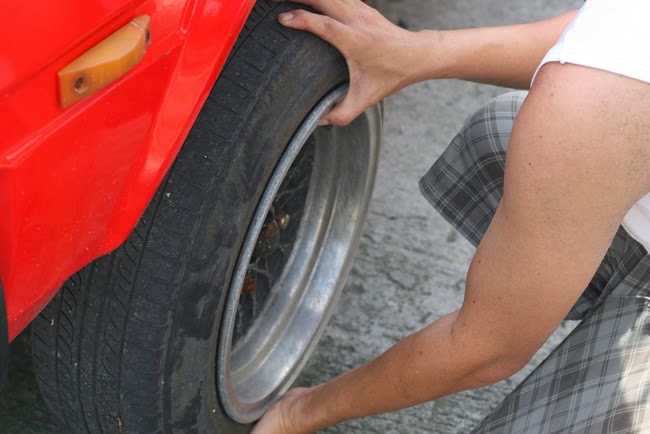 Different tires on the axles are fraught with skids and other unsafe situations, since the load on the wheels will be unevenly distributed.
Different tires on the axles are fraught with skids and other unsafe situations, since the load on the wheels will be unevenly distributed. Tires with different tread patterns cannot be on the same axle, as well as tires:
You cannot put different tires on the same axle. The list of prohibitions also includes combinations of new tires:
It is prohibited by law to put different tires on the same axle.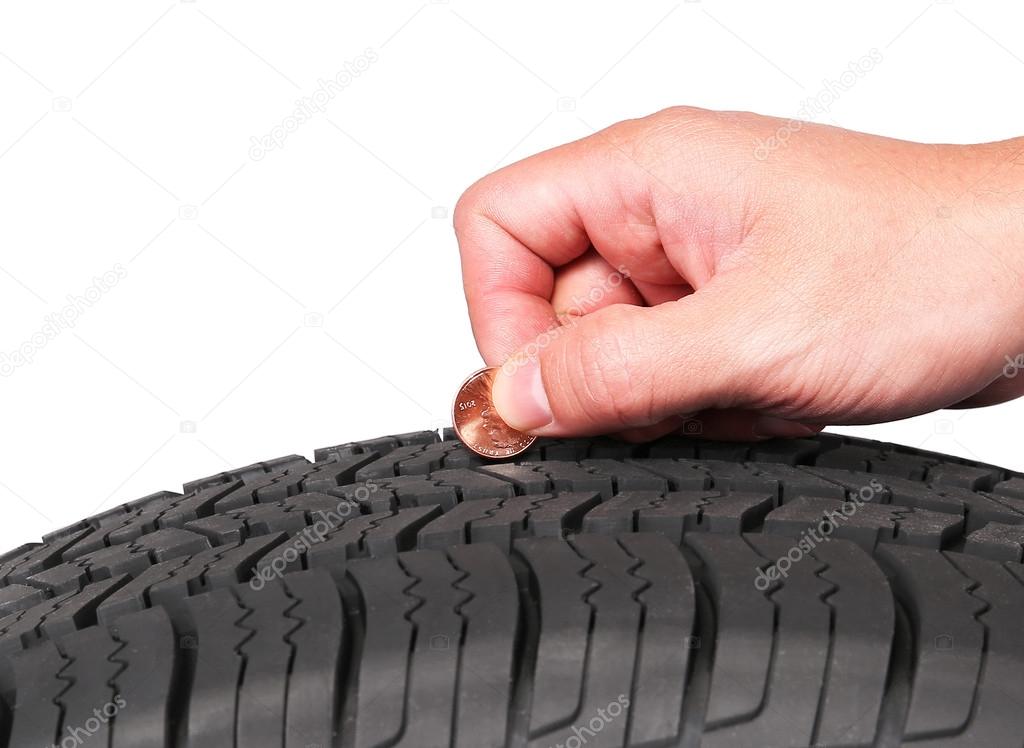 This rule also applies to winter and summer. The combination of winter tires on the left and summer tires on the right and vice versa is not allowed.
This rule also applies to winter and summer. The combination of winter tires on the left and summer tires on the right and vice versa is not allowed.
The use of winter and summer tires on different axles (with the exception of non-studded winter tires in the front and ordinary summer tires in the rear) is not restricted by law, but it is still not worth doing. Due to different tire grip values, the behavior of a car on the road can be completely unpredictable. It is also worth using all tires for one season because using them out of season accelerates wear, which is why tires will have to be replaced much earlier than recommended by the manufacturer. Only cases when you need to get to the service station are excluded.
The following options are also allowed for winter and summer tires:
With different tires on the same axle, even at low speeds, the car becomes less steerable.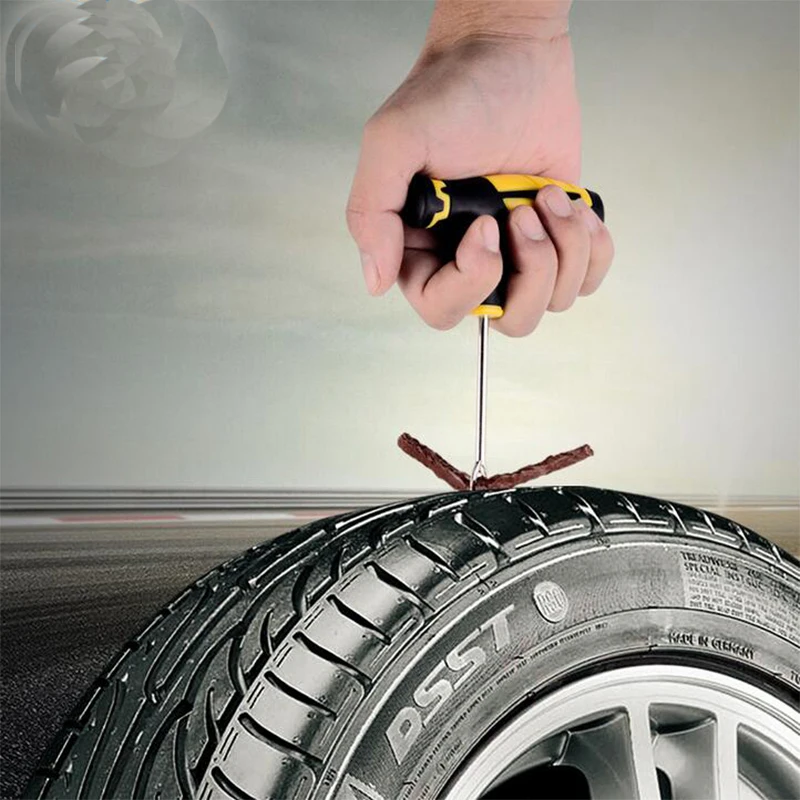 This is especially important when driving in icy or rainy conditions. The use of tires for dry roads and to avoid hydroplaning at the same time provokes uncontrolled drifts of the car. The result of such driving is unpredictable and dangerous, especially when the vehicle develops a high speed.
This is especially important when driving in icy or rainy conditions. The use of tires for dry roads and to avoid hydroplaning at the same time provokes uncontrolled drifts of the car. The result of such driving is unpredictable and dangerous, especially when the vehicle develops a high speed.
If an accident occurs, and the driver has different tires installed on the car, then with almost one hundred percent probability he will be found guilty of the accident. Well, if it doesn’t come to this, and the driver is limited only to a fine for non-compliance with the markings of the wheels.
Ideally, the car should be equipped with a set of 4 identical tires from the same manufacturer. If one of the wheels cannot be restored, then you can try to find a tire with the same tread as the others, but the best option is to take 2 identical tires and completely renew the axle on which the wheel broke. This will not only save money, but at the same time ensure good manageability, as well as eliminate problems with the law.
Even at the dawn of the automotive industry, when car tires were made of natural rubber, which melted in the sun and tanned from frost, designers and manufacturers thought about something more perfect. After all, such tires are not far removed from the wheel on a horse-drawn cart. As a result, technologies have developed, oil processing methods have improved, times have changed.
In 1927, among other things, the Soviet scientist Sergei Vasilievich Lebedev, synthetic rubber was obtained, which became the progenitor of the material of modern tires. But such a material did not become a panacea, in addition to the rubber itself providing high performance properties for tires, the shape and profiles of the tire were also important. Subsequently, the tire treads became flat, in order to provide a large area with the road, which means stability on the road.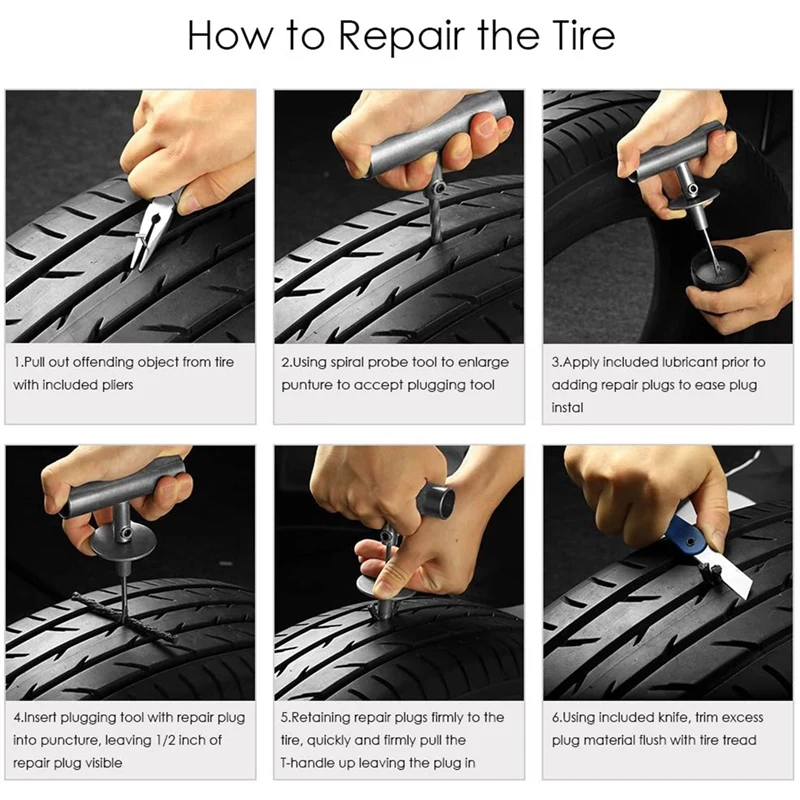 In addition, they have a protector. At the same time, in some cases, the tire tread required a certain installation of tires, according to their rotation. It is about these very installation cases, as well as what will happen if the tires are installed incorrectly, that we will describe in our article.
In addition, they have a protector. At the same time, in some cases, the tire tread required a certain installation of tires, according to their rotation. It is about these very installation cases, as well as what will happen if the tires are installed incorrectly, that we will describe in our article.
If you pay attention to the tread of tires that drive around your city, then most attentive people will surely see that tires are different. In one case, the tread pattern is like a checkerboard, just squares, in the other there is a strict direction, relative to the transverse axis of the wheel, and symmetrical. And, in the end, the orientation relative to this axis is asymmetric. That is, we can say about the banal, very well-known fact that tire treads are: directional and non-directional. Moreover, the welded tire tread can be symmetrical or asymmetric.
(Classification of the type of tires based on the type of tread)
So why do manufacturers bother to make this pattern, what role does it play when using tires? After all, all this is clearly not only for the sake of beauty.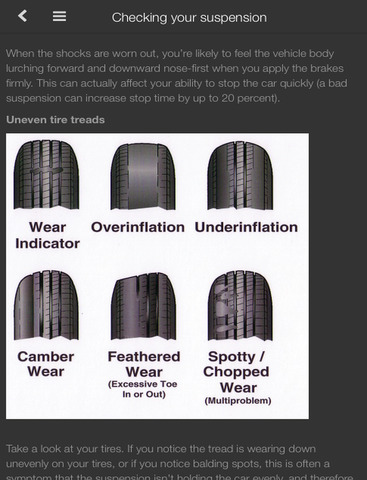
We'll start with the case where the tread is non-directional. In this case, there is no need to talk about the correct installation of the tire, regarding where it should rotate. One way or the other, it doesn't matter. Another thing is when the protector is directional.
For a car enthusiast - an average person who does not want to delve into the essence of the matter, everything is simple. Look at the marking on the rim "ROTATION", which translates from English as rotation, and put the tire on the car in accordance with the rotation of the wheel in the direction of the car moving forward.
...or "outside" marking...
In this case, the rim with this marking must "look" outwards. Marking for asymmetric tread pattern.
In fact, there are a lot of different markings on the tire. If you are interested in them in full, then you can learn about them from the article "Car Tire Marking".
For those who want to know why a tire should be stabbed this way and not otherwise, and what an incorrect tire installation can affect, we will tell the following.
The direction of the tread on the tire is designed to remove liquid, dirt, slush from under it, that is, everything that has a low viscosity. At the same time, this withdrawal is necessary in order to avoid the so-called hydroplaning effect. That is, to prevent the loss of contact between the road and the rubber. Why this very contact is needed, we will not explain. Let's talk about how the directional tread removes all this from under the contact patch of the tire with the road.
This is a long story and explanation. But it is better, as they say, to see once. We made a gif especially for you. Take a look.
Essentially the tread works like the vanes on a centrifugal pump when it pumps water, except that the driving force here is not centrifugal force, but the force from squeezing water into the grooves of the tread.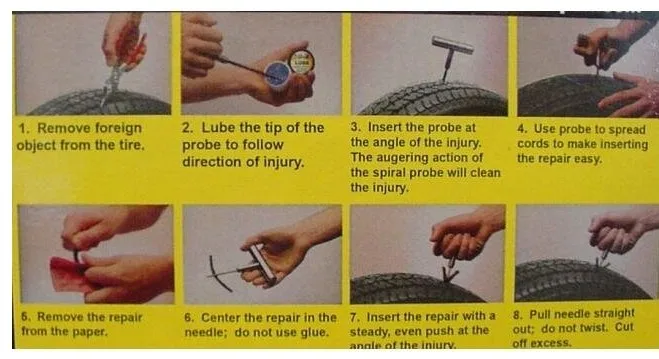 The force is generated each time the tire hits the fluid it is supposed to expel. So water, dirt, wet snow is squeezed out into the groove and discharged outside. The wheel rotates further, and new water is again squeezed out into the groove in the direction of the car. Due to the removal of this "grease", the contact between the tire and the road is improved, which entails a safer ride. It's all so simple and logical. Here I want to talk about the direction of the drawing. As we have already said, you can pay attention to the ROTATION marking, or you can look at the picture.
The force is generated each time the tire hits the fluid it is supposed to expel. So water, dirt, wet snow is squeezed out into the groove and discharged outside. The wheel rotates further, and new water is again squeezed out into the groove in the direction of the car. Due to the removal of this "grease", the contact between the tire and the road is improved, which entails a safer ride. It's all so simple and logical. Here I want to talk about the direction of the drawing. As we have already said, you can pay attention to the ROTATION marking, or you can look at the picture.
(the tire is installed correctly)
So, the tread grooves should always move away from the contact patch of the tire with the road towards the rear of the car, when viewed from above on the wheels on the left. And the opposite situation for the wheels on the right. In this case, you can not look for the markings on the rim. I looked at the tread pattern and put a tire on the car according to the pattern.
Here everything is according to the logic of what is happening, but in reverse order. If everything under our wheels (dirt, sleet, water) is more difficult to squeeze out, since the grooves will be directed to the intake of all this environment, then in fact it will turn out that excess pressure will form in the center of the tire, in the contact patch. It will try to raise the tire, which contributes to the deterioration of rubber grip. By itself, this is not safe.
However, if we talk about a dry road, when there is no water on the street, or it is frosty and just snowing, then the presence of such grooves that drain water, slurry, in fact, does not oblige to anything. Also, such grooves will not affect the situation with limited speed, about 5-20 km/h.
So, the direction of the tread grooves on the tire was invented not just for beauty.